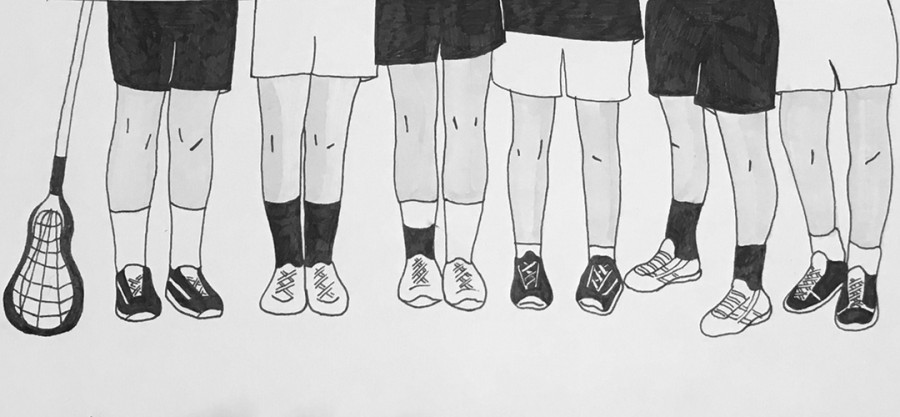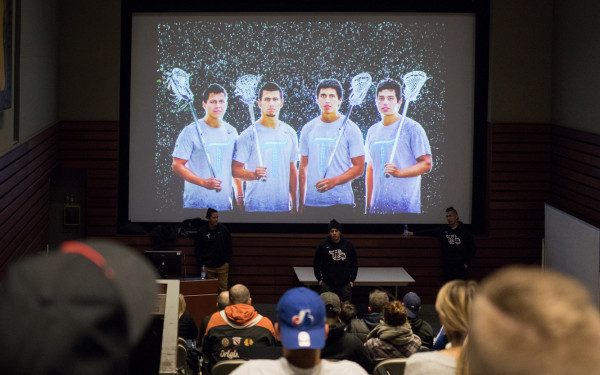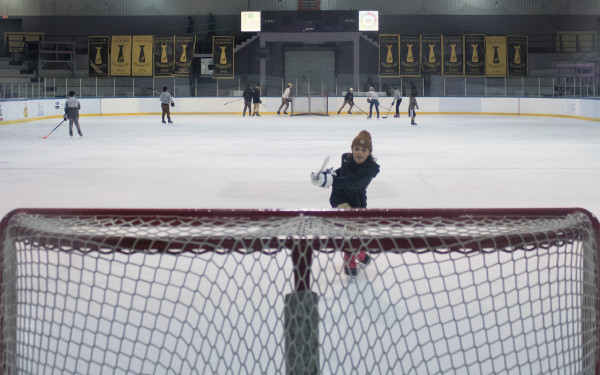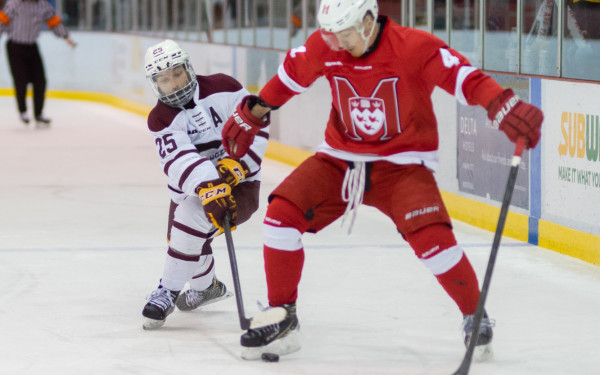Coming Full Circle: The Resurgence of Lacrosse
Increasing Recognition for the Indigenous Origins of Lacrosse
“Our Country, Our Game.”
That was the motto of the National Lacrosse Association of Canada, established in 1867 just as Canada confederated. Lacrosse became Canada’s national sport.
That same year, players of Indigenous origin were partially banned from belonging to the NLA.
By 1880, they were completely prohibited from playing in championship games.
“Behind the story [of lacrosse] is actually a lot of exclusion and a lot of racism [against] Indigenous players,” said Dr. Allan Downey, an associate professor in Indigenous Studies at McGill University. “This is the very game Indigenous people shared with Canadians and within 30 years, they were actually banned from their own game.”
For many non-Indigenous people, lacrosse is easily viewed in the same light as any other sport where the only goal is to win. For Downey, who is of the Nak’azdli First Nation, the sport represented more than wins and losses—it allowed him to get through school and earn a sports scholarship to Mercyhurst University in Erie, PA.
“I was able to travel quite a bit and ultimately, it’s been the focus of my research, the focus of my work, focus of my community work,” he said. “It just opened a lot of doors for me.”
But it’s not just Downey. From a historical perspective, lacrosse was meant to be played for more than recreational purposes. Deeply rooted in Indigenous tradition, culture and religion, it is one of the activities that defines and solidifies their identity.
Today, lacrosse remains a sport played by Indigenous communities across the continent. For some time, however, the history and knowledge of the traditional game was taken away from them.
“The various colonial policies that have attacked Indigenous identities, histories, cultures, ceremonies… all of these things have had a significant impact on Indigenous communities and left a lethal legacy within our communities,” said Downey.
A Little Pre-Colonial History
Before the arrival of European settlers in North America, Indigenous people played lacrosse as early as the twelfth century.
However, the sport wasn’t always known as lacrosse. In fact, its name varied from tribe to tribe. Each name denoted a different aspect. The Mohawks play a game called tewaarton, while the Crees called it ho´tti ico´si, both meaning “younger brother of war,” making reference to the warring aspect of the game.
Meanwhile, the Onondagas took part in dehuntshegwaes or ka-che-kwa-ah, which denotes “the men hit a round object.” The Choctaws engage in kapucha, which translates to “crosse,” or the French term for the stick used to play. The Onondaga and Choctaw tribes denote the technical and physical parts of the game.
Based on the variety of names attributed by different Iroquoian tribes, the game was played for many reasons. From settling intertribal disputes to celebrating during festivals, the overarching purpose of the game was to “play for the Creator”—an aspect of the game that is still
alive today through the traditional game lacrosse, known as the medicine game.
“Those types of games are very different from what you will see on TV,” said the general manager of the Kahnawake Mohawks Greg Horn.
Horn, who is also the editor-in-chief of the online news publication Kahnawake News, is Mohawk. From a young age, lacrosse was prominent in his life. In 2013, he became the general manager of the Kahnawake Mohawks, which play in the Quebec Senior Lacrosse League.
He explained that in the medicine game, there are no rules, no set number of players—“it’s whoever wants to play, plays”—and the sticks used to play are two-sided. Instead of a scoring net, there are simply two posts.
“It’s a bit different but it’s also because when lacrosse was given to us, it was seen as a gift,” he said. “Every time we play the game, we’re supposed to play it for the enjoyment of the Creator. So we go in, we play with a good mind and a clear heart.”
Prior to each game, pre-game rituals take place, like the traditional tobacco burning ceremony.
“No matter what, they need to be done.”
“Indigenous nation are reviving those histories, which is significant and really important work.” — Greg Horn, manager of the Kahnawake Mohawks
The Lacrosse We Know Today
With the lack of rules, games could become violent as they were historically used to help train young players for battle.
In Fabrice Delsahut’s journal article “From Baggataway to Lacrosse: An Example of the Sportization of Native American Games,” the author explains that with the arrival of French missionaries in the early to mid-fifteenth century, lacrosse was heavily criticized.
However, it did catch the eye of a number of European settlers and by the 1700s and 1800s, white people began playing against Indigenous teams. According to Horn, extending lacrosse to other people has always been an important to Indigenous people.
“For us, the game doesn’t belong to anybody,” said Horn. “It belongs to everybody.”
The game spread quickly—and changed rapidly. William George Beers, noted dentist and lacrosse player who campaigned in 1867 to have the game accepted as the national sport, took it upon himself not only to officially name the game as “lacrosse,” but he also instilled the first set of rules seen in today’s game.
In doing so, many aspects of the traditional game disappeared. The multifaceted nature of the sport, played for religious, spiritual, recreational and practical reasons, became masked under the umbrella term of lacrosse. The days of customizing the rules before each game began to slowly disappear in competition games played against non-Indigenous teams.
“Those names are there, because in our language, it’s very descriptive, so it describes the action you’re doing,” said Horn.
However, its violent nature stuck well into the 1900s. According to Delsahut, players engaging in violent acts—ranging severe physical injuries to accidental murder—were banned.
In 1876 and 1883, Beers organized games between Indigenous and non-Indigenous teams in Great Britain to promote the sport overseas and increase its popularity. Slowly, the game originally played by Indigenous people started transforming.
All these changes, combined with lacrosse’s growing attraction, led to the exclusion of Indigenous players from the game. Over time, they were banned from playing on “white” teams.
‘Excluding Indians from playing for a white club was a way of excluding us from the game,” said Horn. “It leveled the playing field for white clubs. When these rules were written, it was outdated then, and it’s outdated now.”
The Resurgence
Despite more than a century’s worth of colonialists appropriating a sport they renamed and adapted to their liking, lacrosse within Indigenous communities is experiencing a resurgence across North America.
“What we’re seeing is those Indigenous nations are reviving those histories, those stories, which is significant and really important work,” said Downey.
Part of this reconnection with past heritage can be linked to the recognition of the Iroquois National Lacrosse team by the Federation of the International Lacrosse in 1987. The ability to compete as a nation is in an important step in recognizing the Indigenous roots of the game.
On top of that, history was made in 2015 when the World Indoor Championships were hosted on Onondaga nation, marking the first time an international lacrosse tournament was held on Indigenous land.
“That was huge,” recalled Horn. “When the Iroquois Nationals played team USA in Onondaga, that was the first ever the Iroquois Nationals had an actual home game on home soil.”
Another factor is the rise of the Thompson brothers—Lyle, Jeremy, Jerome and Miles. Born and raised on Onondaga nation, they have become the faces of the Iroquois Nationals. Downey believes that they have become a source of inspiration for Indigenous youth.
“The Thompson brothers are great ambassadors for the sport,” said Horn. “They opened doors for a lot of people. And now other schools are starting to look at some Indigenous players.”
For Horn, lacrosse is coming full-circle with increasing recognition of its Indigenous roots.
“We got these university teams, these top tier teams looking at our players saying, ‘Okay, well we need to have these players on our team’,” he said.
While progress has been made in re-discovering the history and traditions that underlie, the sport of lacrosse, there are still issues that have yet to be addressed. The presence of sports teams and mascots bearing offensive Indigenous names remains to be an issue.
“There’s a colonial residue within the sport that has not been addressed, which needs to happen for positive change, on mutually agreeable term that sees Indigenous peoples and Indigenous teams really playing a significant role in the future of lacrosse,” said Downey.
“This should be the primary step in terms of moving forward.”



1web_600_375_90_s_c1.jpg)


